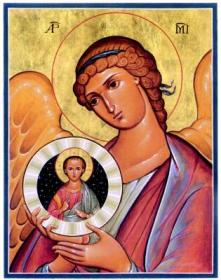The Second Council of Orange was in 529. Researching it now, I find descriptions of it as rejecting Pelagius and affirming Augustine. Is that what you had said last night? Do the Orthodox churches affirm Pelagius? I'm interested in what you were saying.
I think Pelagius was something of a strawman. The Pelagians were roughly the same people as the Nestorians, who had been rejected by the Council of Ephesus in 431. (The details of the heresies of Nestorianism and Pelagianism, as defined by the councils, cover different subjects, but the same people always seem to have held both sets of heretical beliefs, and they are sometimes held to be logically connected.)
The main target of the Second Council of Orange was in reality John Cassian, who held a position approximately half-way between those of Pelagius and Augustine. The article on Cassian in The Catholic Encyclopedia puts it this way: "St. Augustine regarded man in his natural state as dead, Pelagius as quite sound, Cassian as sick."
The three figures were roughly contemporary. Cassian wrote the official response of Rome to Nestorius, and he found in Nestorius a revival of Pelagianism, so he condemned the former along with the latter. Augustine wrote seven treatises against the Pelagians and three against the "Semipelagians" (a term that came to be used centuries later to describe the teaching of Cassian). Cassian, meanwhile, in his Conferences, tried to stake out the middle path between the extremes of Augustine and Pelagius.
Cassian was a monk in southern Gaul (near Marseilles). He had traveled extensively in the East and learned from the desert fathers. He came back home to Gaul, founded monasteries, and lived as a monk. His Conferences and Institutes, which summarize what he learned from Eastern monks, are required reading for Benedictines to this day – they are mentioned in the Rule of St. Benedict, though Benedict refrained from naming the author in an effort to avoid controversy.
The Second Council of Orange made small criticisms of Augustine's most extreme teachings on predestination, but it largely affirmed his teaching against that of Cassian, as well as that of Pelagius. Cassian's teaching was, essentially, just a summary of the theology of the Eastern church. While I have not read much of Cassian, I know the Eastern Church's teaching regarding synergy, or cooperation with grace, is sometimes described as Pelagian or Semipelagian by some Catholics and most Calvinists.
I think it could be argued that Orange was where the West first made an explicit, formal departure from the patristic consensus, implicitly elevating Augustine above all of the other fathers. Much of the East/West split can be traced to the Western Church's choices over the next few centuries to follow Augustine on exactly those points where he is most at odds with the other fathers.
Another dimension of this is the place of monasticism in the Church. Cassian was a monk who wrote for monks. Monasticism has always held a central role in the East – in fact, all Eastern bishops are under monastic vows. In the West, monasticism has never been quite as well integrated with the secular side of the Church, and it has never held as central a place in leading the Church – except in England, where a majority of the cathedrals were monastic foundations.
Tuesday, September 19, 2006
Subscribe to:
Comments (Atom)

